A Bionic-Based Multi-Objective Optimization for a Compact HVAC System with Integrated Air Conditioning, Purification, and Humidification
Abstract
1. Introduction
2. Literature Review
2.1. Historical Development of HVAC Systems
2.1.1. Energy Efficiency and Passive Cooling Techniques
2.1.2. Machine Learning and Computational Optimization
2.2. Air Purification Technologies
2.2.1. Development of Filtration and Photocatalytic Systems
2.2.2. Integration Challenges
2.3. Advances in Humidification Technologies
Recent Innovations
- (a)
- Liquid dehumidification/humidification cycles: Cai et al. [19] developed a heat pump-based system that integrates liquid dehumidification and humidification, achieving simultaneous temperature and humidity regulation. Additionally, Salins et al. [20] assessed a sustainable technology-based novel humidifier system, which emphasizes energy-efficient performance while maintaining environmental friendliness, further highlighting the potential of integrating innovative approaches into HVAC design.
- (b)
- Hollow-fiber membrane humidifiers: Jo et al. [21] demonstrated the effectiveness of hollow-fiber membrane humidifiers in delivering precise humidity control with low energy consumption, making it a promising solution for advanced HVAC applications. This approach aligns with the findings of Solomakha et al. [22], who conducted experimental investigations into the mass transfer characteristics of centrifugal humidifiers, providing insights into optimizing humidity control efficiency.
- (c)
- Microwave-based sterilization in humidification systems: Lv et al. [23] explored the application of microwave sterilization technology in central air conditioning systems, showcasing its ability to effectively sterilize humidifiers while maintaining performance. This innovation adds a critical layer of hygiene to HVAC operations, further contributing to the development of safe and sustainable humidification technologies.
2.4. Multifunctional HVAC Systems
2.5. Optimization and Bionic Design
2.5.1. Optimization Techniques
2.5.2. Bionic Design Principles
2.6. Summary of Combined Techniques
2.7. Research Gaps and Future Directions
2.7.1. Identified Research Gaps
- (a)
- (b)
- (c)
- Data Deficiency: The absence of high-resolution real-world performance data limits model accuracy and applicability [15].
2.7.2. Future Directions
- (a)
- Develop integrated optimization frameworks for multi-objective HVAC systems.
- (b)
- Incorporate bionic designs to enhance airflow dynamics and reduce operational costs.
- (c)
- Validate models with real-world datasets to ensure practical applicability and scalability.
3. Methodology
3.1. Air Conditioning Partial Modeling
3.1.1. Thermal Distribution Within the Conditioned Space
3.1.2. Airflow Distribution and Characteristics
3.1.3. Optimization Framework
- (a)
- Volume constraint for Partial Modeling of Air Conditioning:
- (b)
- Air velocity speed constraints for Partial Modeling of Air Conditioning:
- (c)
- Airflow rate constraints for Partial Modeling of Air Conditioning:
- (d)
- Temperature range constraint for Partial Modeling of Air Conditioning:
- (e)
- Outlet number and position constraint:
- (f)
- Power constraint for Partial Modeling of Air Conditioning:
- (g)
- Thermodynamic balance constraint for Partial Modeling of Air Conditioning:
- (h)
- Airflow diffusion constraint for Partial Modeling of Air Conditioning:
- (i)
- Operational time constraint:
3.1.4. Optimization and Solution Method
3.2. Air Purifier Partial Modeling
3.2.1. Purification Efficiency Model
3.2.2. Impact of Shape on Airflow and Optimization Modeling
- (a)
- Honeycomb Inlet Design
- (b)
- Sharkskin-Inspired Flow Path Design
3.2.3. Objective and Constraints for Partial Modeling of Air Purifiers
- (a)
- Volume Constraint:
- (b)
- Airflow Speed Constraint for Partial Modeling of Purification Efficiency:
- (c)
- Inlet Area Constraint for Partial Modeling of Purification Efficiency:
- (b)
- Filtration Area Constraint for Partial Modeling of Purification Efficiency:
- (e)
- Airflow Uniformity for Partial Modeling of Purification Efficiency:
- (f)
- Power Consumption Constraint for Partial Modeling of Purification Efficiency:
- (g)
- Noise Level Constraint for Partial Modeling of Purification Efficiency:
3.2.4. Optimization Using DeepACO Algorithm
3.3. Humidifier Partial Modeling
3.3.1. Mist Diffusion Model
3.3.2. Bionic Shape Design
- (a)
- Branching Structure Optimization
- (b)
- Surface Microstructure Optimization
3.3.3. User Comfort and Humidity Uniformity
3.3.4. Optimization Objective and Constraints
- (a)
- Volume Constraint:
- (b)
- Humidity Constraint:
- (c)
- Energy Constraint:
- (d)
- Spatial Coverage Constraint:
- (e)
- Mist Evaporation Constraint:
- (f)
- Design Feasibility Constraints:
- (g)
- User Comfort Constraint:
3.3.5. Optimization Using the Slime Mold Algorithm
3.4. Tri-Unit Air Conditioner Modeling
3.4.1. Objective Function
3.4.2. Constraints
- (a)
- Device Volume:
- (b)
- Airflow Speed and Volume:
- (c)
- Temperature and Humidity Range:
- (d)
- Air Purification Efficiency:
- (e)
- Energy and Power:
- (f)
- Placement and Structure:
- (g)
- Noise Level Constraint:
- (h)
- Design Feasibility Constraints:
- (i)
- Airflow Uniformity:
- (j)
- Mist Evaporation Constraint:
3.4.3. Optimization and Solution Using the BWO Algorithm
4. Results and Analysis
4.1. Air Conditioning Results and Analysis
4.1.1. Convergence of the Optimization Process
4.1.2. Influence of Outlet Parameters on Air Conditioning Efficiency
4.1.3. Seasonal Temperature Dynamics
4.1.4. Effects of Air Conditioning Dimensions
4.1.5. Sensitivity Analysis for Key Parameters of Air Conditioning
- (a)
- Dominant Factors: Airflow rate (Q) and outlet velocity (V) were identified as the most influential parameters affecting both temperature uniformity and power consumption.
- (b)
- Minimal Impact of Dimensions: Changes in the unit dimensions (length L, width W, height H) had a relatively minor effect on system performance compared to airflow parameters.
- (c)
- Interactions: The heatmap analysis highlights strong interactions between airflow rate and velocity, reinforcing their collective importance in optimizing system efficiency.
4.1.6. Summary of Device Performance of Air Conditioning
- (a)
- The PO algorithm successfully optimized the system design, achieving convergence with high efficiency.
- (b)
- Air outlet parameters, particularly position and airflow configuration, play a critical role in achieving uniform temperature distribution.
- (c)
- The system adapts effectively to both summer and winter conditions, maintaining consistent thermal regulation.
- (d)
- Airflow rate and velocity are the dominant factors influencing temperature uniformity and energy consumption, while unit dimensions exhibit a lesser impact.
4.2. Air Purification Results and Analysis
4.2.1. Performance of the DeepACO Algorithm
4.2.2. Optimized Air Purifier Design
- (a)
- Honeycomb Inlet: The biomimetic honeycomb inlet ensures uniform airflow distribution by dividing incoming air into smaller, laminar streams. This reduces turbulence and enhances filtration efficiency, as shown in the top right of Figure 10.
- (b)
- Sharkskin-Inspired Airflow Path: The sharkskin-inspired surface reduces drag and promotes smooth vertical airflow, as demonstrated in the airflow visualization (bottom left). This feature minimizes turbulence and improves overall aerodynamic efficiency.
- (c)
- Balanced Inlet and Outlet Design: The final optimized design (bottom right) achieves a well-distributed airflow through the filters, ensuring efficient filtration while maintaining low resistance. The integration of these features supports high purification effectiveness and highlights the advantages of biomimetic design in enhancing both functionality and esthetics.
4.2.3. Sensitivity Analysis of Air Purifier
- (a)
- Filter Height Variations: Baseline filter heights of 0.15 m, 0.4 m, and 0.55 m were adjusted by ±0.05 m. Reduced filter height resulted in smoother airflow but less vertical flow, slightly reducing purification efficiency. Baseline configuration achieved optimal performance with balanced airflow and filtration efficiency. Increased filter height led to denser and faster airflow, enhancing filtration contact time but introducing minor turbulence.
- (b)
- Airflow Rate Variations: Airflow rates were varied around a baseline of 0.1 m/s by ±0.02 m/s. Reduced airflow rates led to lower velocity but smoother airflow, potentially reducing noise. Baseline airflow provided optimal filtration and distribution. Increased airflow rates improved filtration speed but introduced higher resistance and noise.
4.2.4. Summary of Device Performance of Air Purifier Partial
4.3. Humidification Results and Analysis
4.3.1. Performance of the SMA
4.3.2. Humidifying Effect and Visualization
4.3.3. Sensitivity Analysis of Humidifier Partial
- (a)
- Branching Factor (α): Increasing α significantly enhances mist diffusion rates, allowing for improved coverage. However, this comes at the cost of reduced humidity uniformity due to the potential creation of localized areas with higher mist concentrations.
- (b)
- Micropore Radius (rporer): Optimizing rporer improves evaporation efficiency by maximizing the interaction between mist particles and air. Both excessively small and large values decrease efficiency, highlighting the need for a balanced pore size to achieve optimal evaporation.
- (c)
- Diffusion Coefficient (D): Higher values of D enhance mist propagation, increasing coverage area. However, an excessively high diffusion rate may lead to increased energy consumption, requiring a trade-off between coverage and energy efficiency.
- (d)
- Energy Weight (w3): Increasing w3 prioritizes energy efficiency within the optimization model. While this reduces energy consumption, it may slightly compromise mist diffusion and humidity performance if overemphasized.
4.3.4. Summary of Device Performance of Humidifier Partial
4.4. Integrated System Results and Analysis
4.4.1. Performance of the BWO Algorithm
4.4.2. Integrated Design of the All-in-One Device
- (a)
- Humidity Distribution: The humidifier, positioned at the central point (2.5, 2.5), achieves a Gaussian diffusion pattern for humidity dispersion. This ensures a uniform distribution, with the highest humidity concentration near the source and a gradual decrease as the distance from the center increases.
- (b)
- Temperature Regulation: The air conditioning functionality exhibits a radial temperature gradient, where cooling effects are most pronounced near the center (2.5, 2.5) and progressively diminish with distance. This pattern demonstrates the device’s ability to maintain a comfortable indoor temperature with precise control.
- (c)
- Air Purification: The PM2.5 concentration decreases exponentially away from the purifier located at the same central point (2.5, 2.5). This distribution highlights the device’s strong air cleaning performance, effectively reducing particulate matter in the surrounding air.
4.4.3. Sensitivity Analysis of Tri-Unit Air Conditioner
- (a)
- Blade Count: The number of blades affects the uniformity of airflow and humidification efficiency. The analysis reveals diminishing returns with an increasing number of blades, indicating an optimal range for effective performance.
- (b)
- Cell Size at the Air Inlet: The size of the honeycomb cells influences the air intake volume and purification efficiency. While smaller cell sizes may slightly reduce purification effectiveness, they can enhance airflow distribution for other functionalities, providing a trade-off for design optimization.
- (c)
- Air Outlet Size: The size of the air outlet impacts the air discharge rate and overall circulation within the system. Proper calibration of this parameter ensures a balance between air delivery and system efficiency.
- (d)
- Humidity Release Rate: The rate of humidity release significantly affects the distribution pattern of humidity. A linear relationship was observed, where higher release rates result in broader humidity coverage.
4.4.4. Summary of Device Performance of Tri-Unit Air Conditioner
5. Discussion
5.1. Integration Challenges and Solutions
5.2. Practical Implications
5.3. Comparison with Existing Systems
5.4. Energy Efficiency and Cost-Effectiveness
5.5. Limitations and Future Directions
- (a)
- Experimental Validation: Conducting empirical studies to validate simulation results and identify any discrepancies under actual operational conditions.
- (b)
- Scalability and Cost Reduction: Exploring manufacturing techniques to simplify the production of biomimetic structures without compromising performance, enabling large-scale implementation.
- (c)
- Dynamic Adaptability: Enhancing the system’s real-time adaptability to varying environmental conditions through the integration of machine learning algorithms and sensor-based feedback systems.
- (d)
- Extended Applications: Investigating the applicability of the system in diverse environments, including extreme climates and high-demand industrial settings.
- (e)
- System Scalability and Manufacturing Process Optimization: While the current study focuses on system performance and optimization algorithms, future research will explore how to optimize manufacturing processes for intricate geometries, ensuring scalability without compromising system performance.
- (f)
- Real-Time Adaptability and Integration of Machine Learning: Although real-time adaptability was not addressed in the current study, future research will focus on integrating machine learning algorithms and sensor-based feedback systems to enhance the system’s real-time adaptability and responsiveness to varying environmental conditions.
- (g)
- In-Depth Energy Efficiency Analysis: Future research can further quantify the energy consumption optimization effects of this method, verifying its energy-saving advantages through precise energy consumption measurements. Additionally, it can be extended to different application scenarios to assess adaptability and stability. Combined with AI optimization and adaptive control, it is expected to improve system efficiency, achieving lower resource consumption and higher sustainability.
- (h)
- Economic Feasibility and Cost-Effectiveness Analysis: Future work may further explore the scalability and long-term economic impact of this methodology across various industrial applications.
6. Conclusions
- (a)
- The development of a multi-objective optimization framework that effectively balances conflicting goals such as energy consumption, noise reduction, and performance.
- (b)
- The application of biomimetic designs, such as sharkskin-inspired microtextures and honeycomb structures, to enhance airflow efficiency, filtration performance, and noise mitigation.
- (c)
- The achievement of superior performance metrics, including a CADR of 400 m3/h, a humidification rate of 1.2 kg/h, and a temperature uniformity index of 0.08, with total power consumption limited to 1600 W.
Author Contributions
Funding
Institutional Review Board Statement
Data Availability Statement
Conflicts of Interest
References
- Clarke, J. 6—HVAC, Renewable Energy Conversion and Control Systems. 2001. Available online: https://www.semanticscholar.org/paper/6-%E2%80%93-HVAC%2C-renewable-energy-conversion-and-control-Clarke/5c35f6b448c0beb5a029c32adca53a2370de952b#related-papers (accessed on 20 November 2024).
- Ekberg, L.E. Concentrations of NO2 and other traffic related contaminants in office buildings located in urban environments. Build. Environ. 1995, 30, 293–298. [Google Scholar] [CrossRef]
- Yang, Y.; Srinivasan, S.; Hu, G.; Spanos, C.J. Distributed Control of Multi-zone HVAC Systems Considering Indoor Air Quality. arXiv 2020, arXiv:2003.08208. Available online: https://arxiv.org/abs/2003.08208 (accessed on 20 November 2024).
- Pfafferott, J.; Herkel, S.; Jäschke, M. Design of passive cooling by night ventilation: Evaluation of a parametric model and building simulation with measurements. Energy Build. 2003, 35, 1129–1143. [Google Scholar] [CrossRef]
- Alemu, A.T.; Saman, W.; Belusko, M. A model for integrating passive and low energy airflow components into low rise buildings. Energy Build. 2012, 49, 148–157. [Google Scholar] [CrossRef]
- Nada, S.A.; Elattar, H.F.; Fouda, A. Performance analysis of proposed hybrid air conditioning and humidification–dehumidification systems for energy saving and water production in hot and dry climatic regions. Energy Convers. Manag. 2015, 96, 208–227. [Google Scholar] [CrossRef]
- Cui, C.; Liu, Y. A hierarchical HVAC optimal control method for reducing energy consumption and improving indoor air quality incorporating soft Actor-Critic and hybrid search optimization. Energy Convers. Manag. 2024, 302, 118118. [Google Scholar] [CrossRef]
- Singh, S.; Abbassi, H. 1D/3D transient HVAC thermal modeling of an off-highway machinery cabin using CFD-ANN hybrid method. Appl. Therm. Eng. 2018, 135, 406–417. [Google Scholar] [CrossRef]
- Kusiak, A.; Xu, G. Modeling and optimization of HVAC systems using a dynamic neural network. Energy 2012, 42, 241–250. [Google Scholar] [CrossRef]
- Sim, K.M.; Park, H.S.; Bae, G.N.; Jung, J.H. Antimicrobial nanoparticle-coated electrostatic air filter with high filtration efficiency and low pressure drop. Sci. Total Environ. 2015, 533, 266–274. [Google Scholar] [CrossRef]
- Zhong, L.; Haghighat, F.; Blondeau, P.; Kozinski, J. Modeling and physical interpretation of photocatalytic oxidation efficiency in indoor air applications. Build. Environ. 2010, 45, 2689–2697. [Google Scholar] [CrossRef]
- Zhong, L.; Haghighat, F. Photocatalytic air cleaners and materials technologies–abilities and limitations. Build. Environ. 2015, 91, 191–203. [Google Scholar] [CrossRef]
- Pergantis, E.N.; Dhillon, P.; Premer, L.D.R.; Lee, A.H.; Ziviani, D.; Kircher, K.J. Humidity-aware model predictive control for residential air conditioning: A field study. Build. Environ. 2024, 266, 112093. [Google Scholar] [CrossRef]
- Lau, H.S.; Lau, S.K.; Soh, L.S.; Hong, S.U.; Gok, X.Y.; Yi, S.; Yong, W.F. State-of-the-art organic-and inorganic-based hollow fiber membranes in liquid and gas applications: Looking back and beyond. Membranes 2022, 12, 539. [Google Scholar] [CrossRef] [PubMed]
- Mamaghani, A.H.; Haghighat, F.; Lee, C.S. Photocatalytic oxidation technology for indoor environment air purification: The state-of-the-art. Appl. Catal. B Environ. 2017, 203, 247–269. [Google Scholar] [CrossRef]
- Izadyar, N.; Miller, W. Ventilation strategies and design impacts on indoor airborne transmission: A review. Build. Environ. 2022, 218, 109158. [Google Scholar] [CrossRef]
- Subramanyam, N.; Maiya, M.P.; Murthy, S.S. Application of desiccant wheel to control humidity in air-conditioning systems. Appl. Therm. Eng. 2004, 24, 2777–2788. [Google Scholar] [CrossRef]
- Wang, N.; Xia, X.H. Indoor Human Thermal Comfort Optimal Control with Desiccant Wheel Cooling System. Energy Procedia 2014, 61, 882–886. [Google Scholar] [CrossRef]
- Cai, D.H.; Qiu, C.B.; Zhang, J.Z.; Liu, Y.L.; Liang, X.; He, G.G. Performance analysis of a novel heat pump type air conditioner coupled with a liquid dehumidification/humidification cycle. Energy Convers. Manag. 2017, 148, 1291–1305. [Google Scholar] [CrossRef]
- Salins, S.S.; Kumar, S.; Reddy, K.; Sachidanandaa, H.K.; Shetty, S.; Stephen, C.; Tejero-González, A. Assessment of a sustainable technology-based novel humidifier system. J. Build. Eng. 2024, 90, 109352. [Google Scholar] [CrossRef]
- Jo, S.Y.; Cho, H.J.; Jeong, J.W. Humidification performance of hollow-fiber membrane humidifier for air-conditioning applications. Appl. Therm. Eng. 2023, 226, 120335. [Google Scholar] [CrossRef]
- Solomakha, A.; Barabash, P.; Rifert, V. Experimental investigation of mass transfer characteristics in centrifugal humidifier. Therm. Sci. Eng. Prog. 2024, 53, 102769. [Google Scholar] [CrossRef]
- Lv, Y.; Hu, G.Y.; Liang, J.Y.; Chen, X.; Chen, B.; Zhao, T.K.; Lu, X.Y.; Wang, B.; Yuan, W.J.; Li, Y.M. Study on microwave sterilization technology of humidifier in central air conditioning system. Build. Environ. 2019, 160, 106220. [Google Scholar] [CrossRef]
- Dong, J.; Li, H.; Yao, Y.; Jiang, Y.; Zhang, X. Experimental study on the performance of a multi-functional domestic air conditioner with integrated water heater. Appl. Therm. Eng. 2017, 120, 393–401. [Google Scholar] [CrossRef]
- He, X.Y.; Wang, P.Z.; Song, W.T.; Wu, G.; Ma, C.W.; Li, M. Experimental study on the feasibility and thermal performance of a multifunctional air conditioning system using surplus air thermal energy to heat a Chinese solar greenhouse. Renew. Energy 2022, 198, 1148–1161. [Google Scholar] [CrossRef]
- Peng, Y.; Shen, H.J.; Tang, X.C.; Zhang, S.Z.; Zhao, J.X.; Liu, Y.; Nie, Y.R. Energy consumption optimization for heating, ventilation and air conditioning systems based on deep reinforcement learning. IEEE Access 2023, 11, 88265–88277. Available online: https://ieeexplore.ieee.org/abstract/document/10220078 (accessed on 20 November 2024). [CrossRef]
- Wang, H.; Chen, X.W.; Vital, N.; Duffy, E.; Razi, A. Energy optimization for HVAC systems in multi-VAV open offices: A deep reinforcement learning approach. Appl. Energy 2024, 356, 122354. [Google Scholar] [CrossRef]
- Abdoalnasir, A.; Psarakis, M.; Dounis, A. An efficient FPGA implementation of the big bang-big crunch optimization algorithm. In Applied Reconfigurable Computing. Architectures, Tools, and Applications: 14th International Symposium, ARC 2018, Santorini, Greece, May 2–4, 2018, Proceedings 14; Springer International Publishing: Berlin/Heidelberg, Germany, 2018; pp. 166–177. Available online: https://link.springer.com/chapter/10.1007/978-3-319-78890-6_14 (accessed on 21 November 2024).
- Cen, J.; Zeng, L.Z.; Liu, X.; Wang, F.Y.; Deng, S.J.; Yu, Z.; Yu, Z.W.; Wang, W.Y. Research on energy-saving optimization method for central air conditioning system based on multi-strategy improved sparrow search algorithm. Int. J. Refrig. 2024, 160, 263–274. [Google Scholar] [CrossRef]
- Lian, J.B.; Hui, G.H.; Ma, L.; Zhu, T.; Wu, X.C.; Heidari, A.A.; Chen, Y.; Chen, H.L. Parrot optimizer: Algorithm and applications to medical problems. Comput. Biol. Med. 2024, 172, 108064. [Google Scholar] [CrossRef]
- Li, S.; Chen, H.; Wang, M.; Heidari, A.A.; Mirjalili, S. Slime mould algorithm: A new method for stochastic optimization. Future Gener. Comput. Syst. 2020, 111, 300–323. [Google Scholar] [CrossRef]
- Ye, H.; Wang, J.; Cao, Z.; Liang, H.; Li, Y. DeepACO: Neural-enhanced Ant Systems for Combinatorial Optimization. In Advances in Neural Information Processing Systems; Koyejo, S., Mohamed, S., Agarwal, A., Belgrave, D., Cho, K., Oh, A., Eds.; Curran Associates, Inc.: San Francisco, CA, USA, 2023; Volume 36, pp. 43706–43728. [Google Scholar]
- Huang, J.X.; Hu, H.Q. Hybrid beluga whale optimization algorithm with multi-strategy for functions and engineering optimization problems. J. Big Data 2024, 11, 3. Available online: https://link.springer.com/article/10.1186/s40537-023-00864-8 (accessed on 21 November 2024). [CrossRef]
- Bixler, G.D.; Bhushan, B. Shark skin inspired low-drag microstructured surfaces in closed channel flow. J. Colloid Interface Sci. 2013, 393, 384–396. [Google Scholar] [CrossRef] [PubMed]
- Gatica, J.M.; Gómez, D.M.; Harti, S.; Vidal, H. Clay honeycomb monoliths for water purification: Modulating methylene blue adsorption through controlled activation via natural coal templating. Appl. Surf. Sci. 2013, 277, 242–248. [Google Scholar] [CrossRef]
- Iwaniszyn, M.; Jodłowski, P.; Sindera, K.; Gancarczyk, A.; Korpyś, M.; Jędrzejczyk, R.J.; Kołodziej, A. Entrance effects on forced convective heat transfer in laminar flow through short hexagonal channels: Experimental and CFD study. Chem. Eng. J. 2021, 405, 126635. [Google Scholar] [CrossRef]
- GB/T 18883-2022; Indoor Air Quality Standard. National Standard of the People’s Republic of China: Beijing, China, 2022. Available online: https://openstd.samr.gov.cn/bzgk/gb/newGbInfo?hcno=6188E23AE55E8F557043401FC2EDC436 (accessed on 21 November 2024).
- GB 21551.3-2010; Antibacterial and Cleaning Function for Household and Similar Electrical Appliances—Particular Requirements of Air Cleaners. National Standard of the People’s Republic of China: Beijing, China, 2011. Available online: https://www.codeofchina.com/standard/GB21551.3-2010.html (accessed on 21 November 2024).
- Branlard, E. Yaw-modelling using a skewed vortex cylinder. In Wind Turbine Aerodynamics and Vorticity-Based Methods; Springer: Cham, Switzerland, 2017; pp. 299–306. Available online: https://link.springer.com/chapter/10.1007/978-3-319-55164-7_21 (accessed on 21 November 2024).
- BS 8233:2014; Guidance on Sound Insulation and Noise Reduction for Buildings. British Standards Institution: London, UK, 2014. Available online: https://www.antpedia.com/standard/6870132-1.html (accessed on 21 November 2024).
- Zhang, R.; Xiang, B.; Wang, Y.W.; Tang, S.T.; Meng, X.K. A lotus-inspired 3D biomimetic design toward an advanced solar steam evaporator with ultrahigh efficiency and remarkable stability. Mater. Horiz. 2022, 9, 1232–1242. Available online: https://pubs.rsc.org/en/content/articlelanding/2022/mh/d1mh02020j/unauth (accessed on 21 November 2024). [CrossRef]
- Zhang, Z.; Yan, Y. Effect of Photolithographic Biomimetic Surface Microstructure on Wettability and Droplet Evaporation Process. Biomimetics 2024, 9, 724. [Google Scholar] [CrossRef]
- ASHRAE Standard 62.1-2019; Ventilation for Acceptable Indoor Air Quality. American Society of Heating, Refrigerating and Air-Conditioning Engineers: Atlanta, GA, USA, 2019. Available online: https://www.ashrae.org/technical-resources/bookstore/standards-62-1-62-2 (accessed on 21 November 2024).
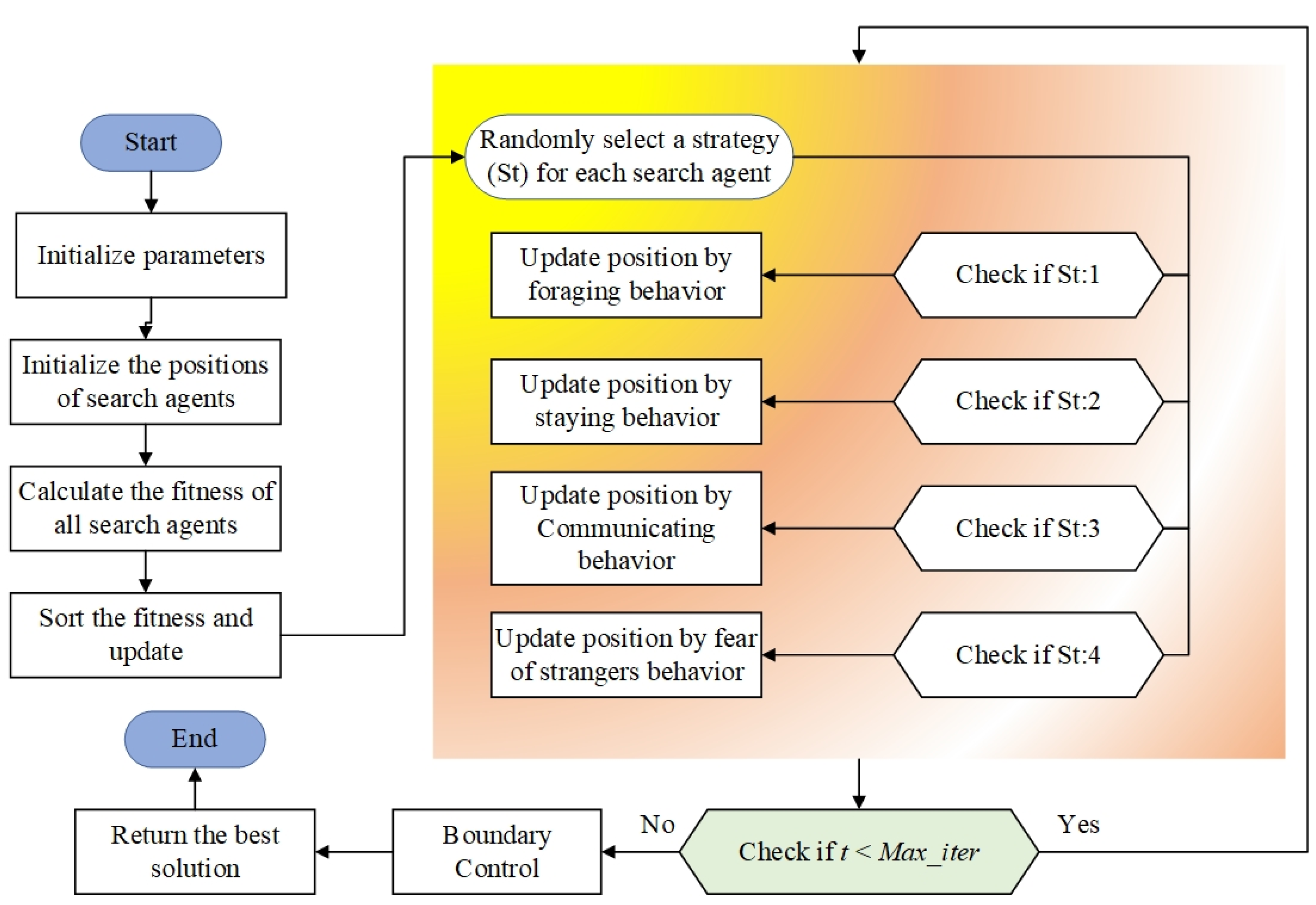
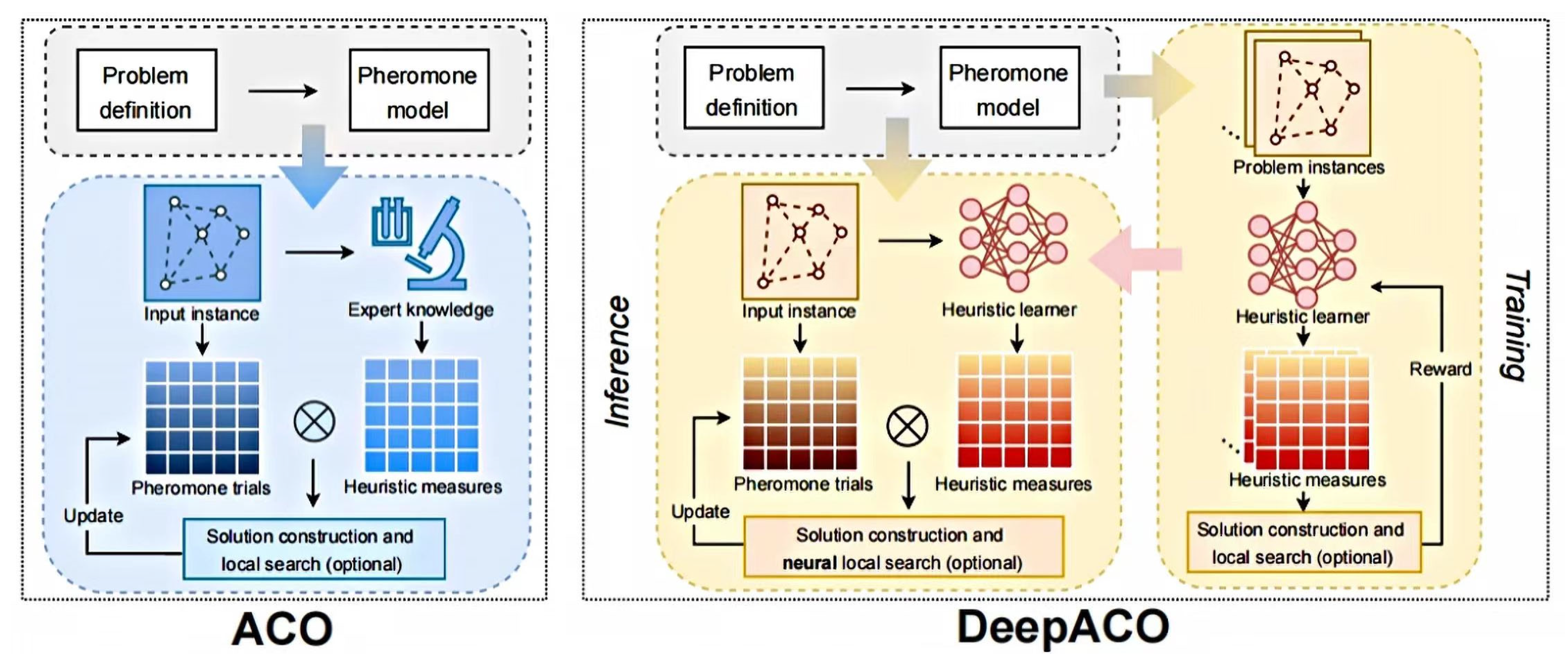
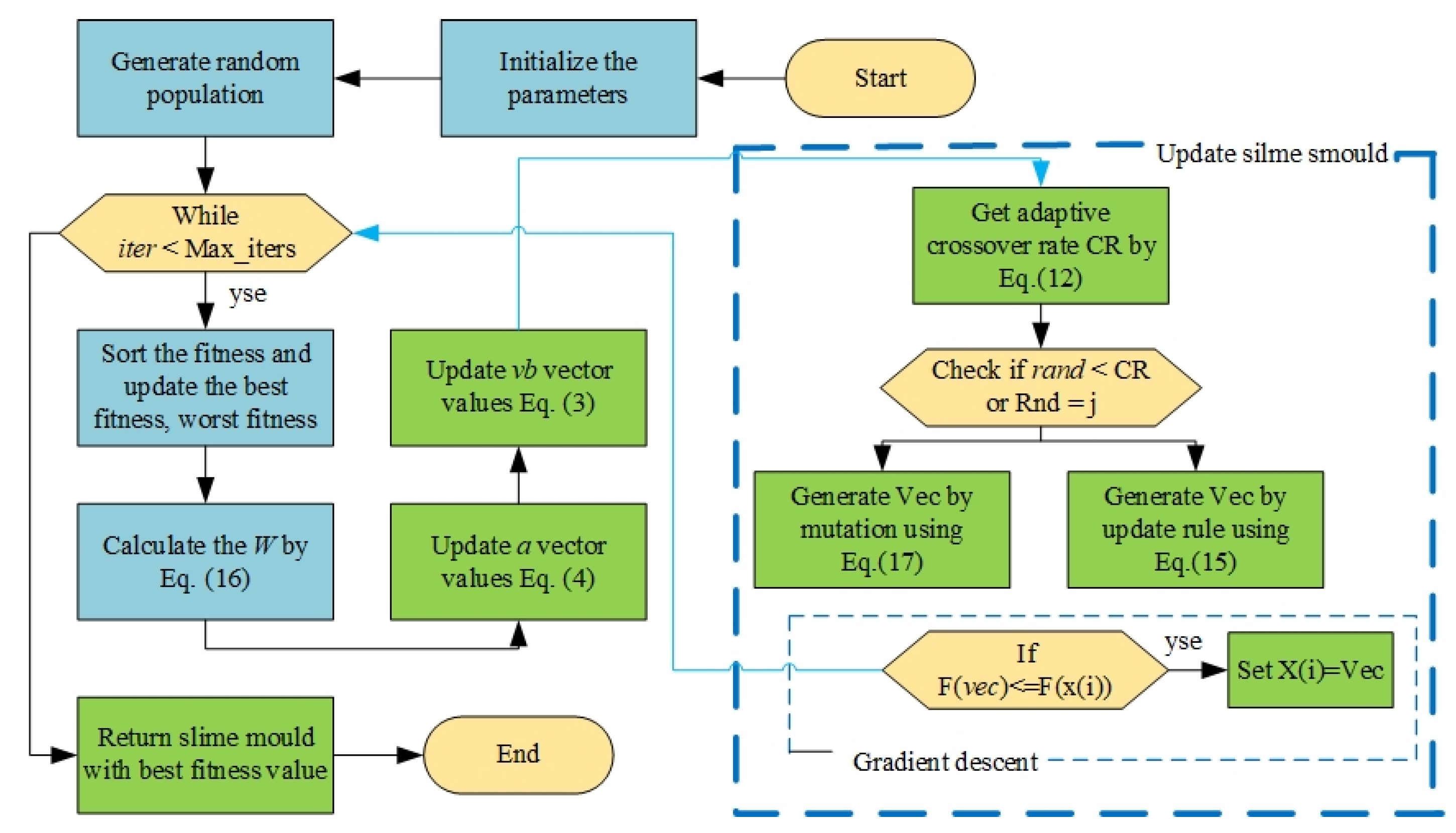


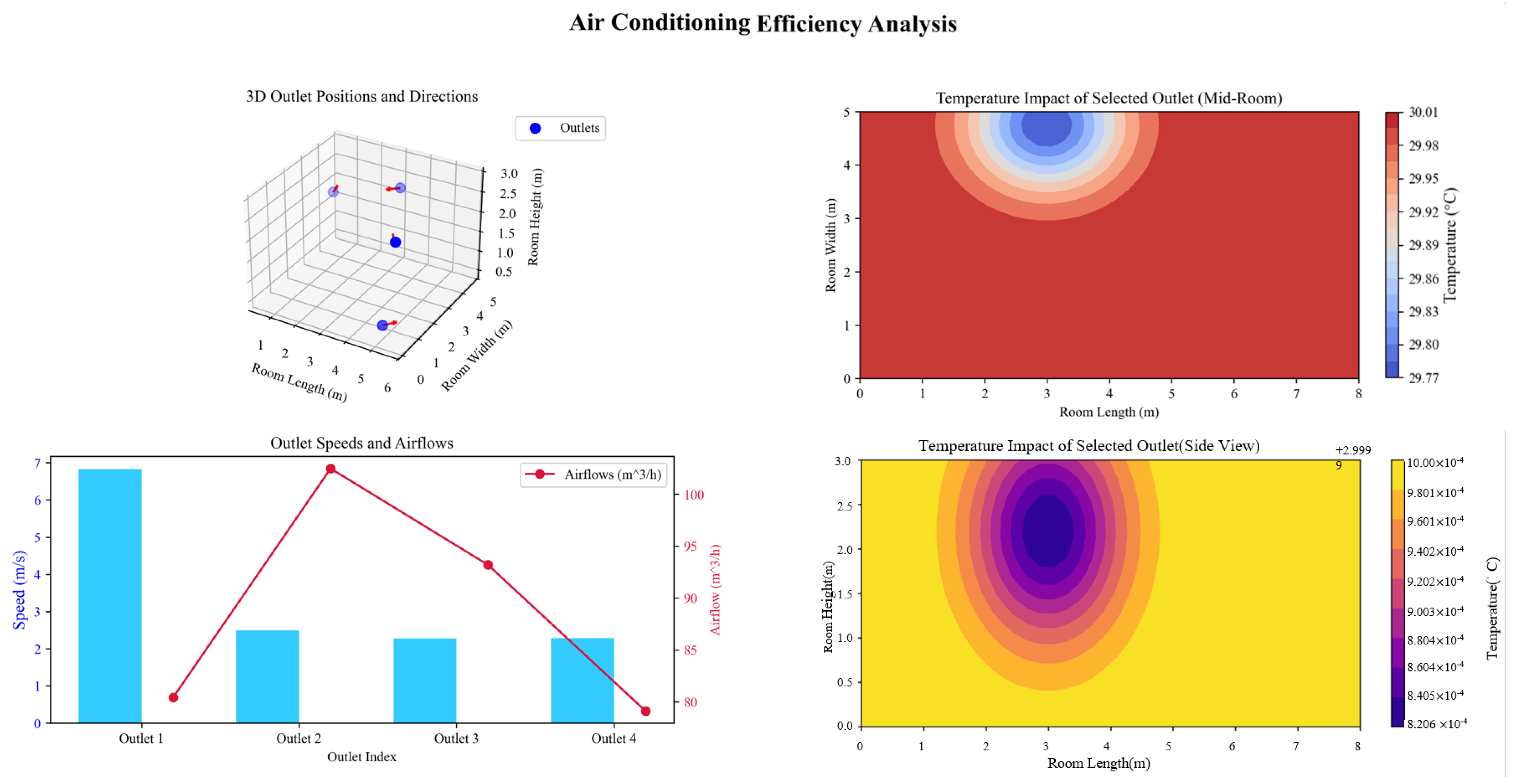
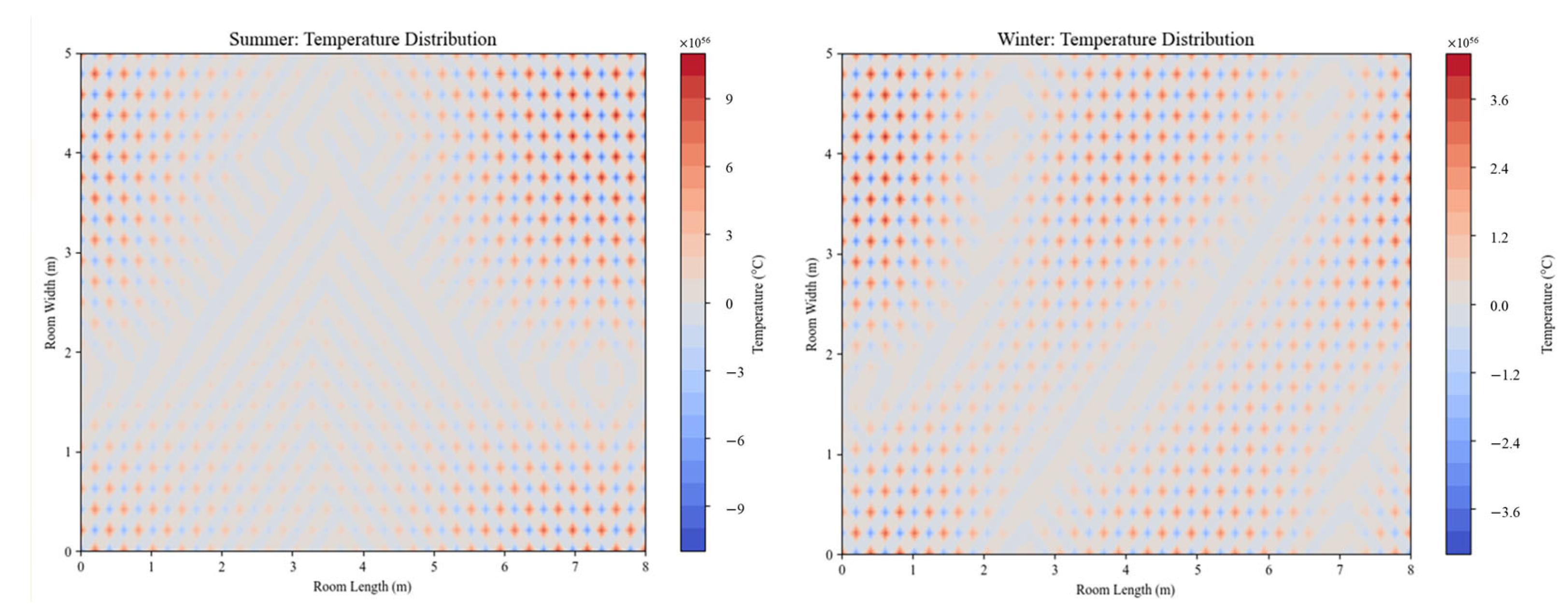
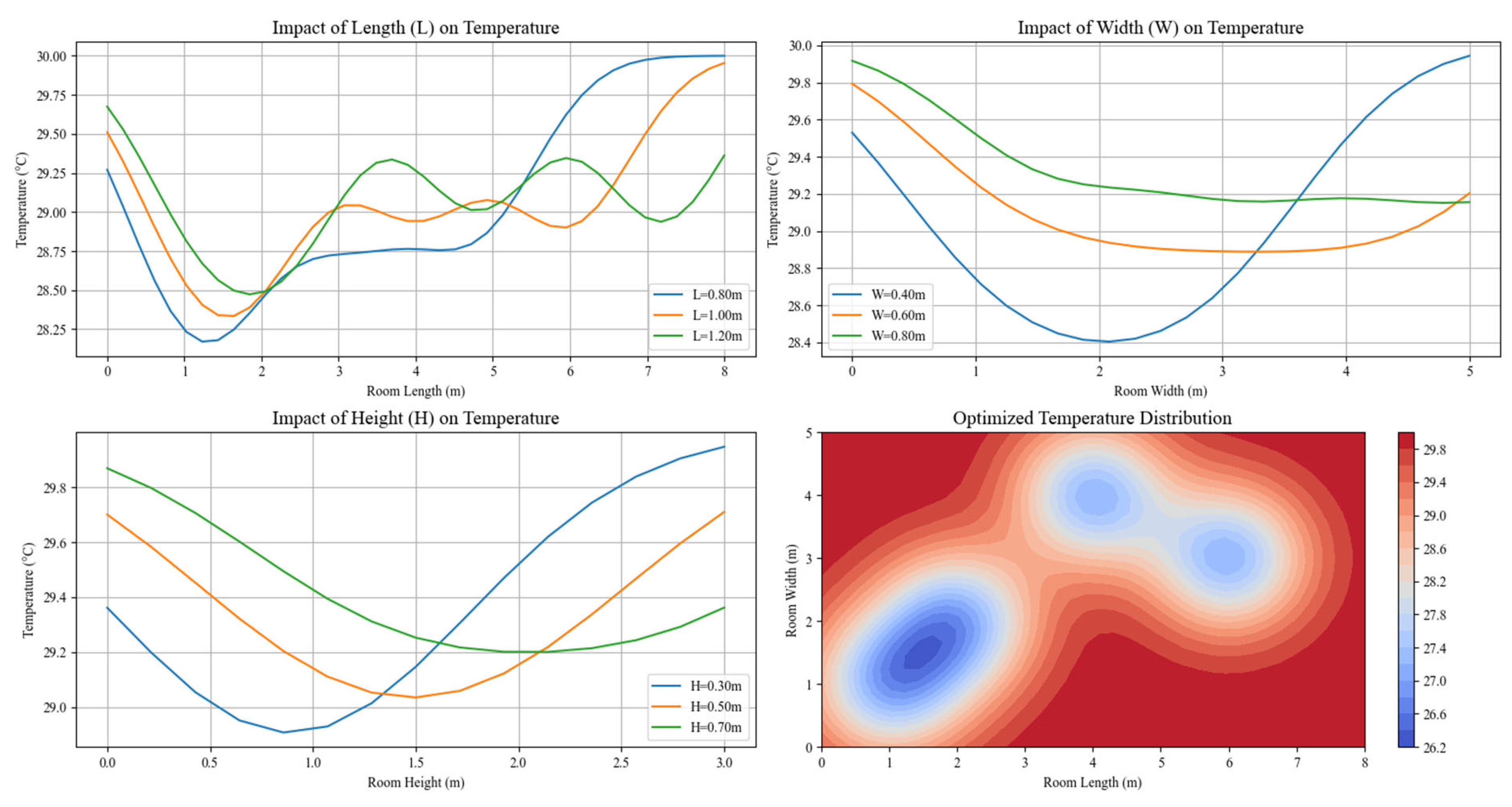
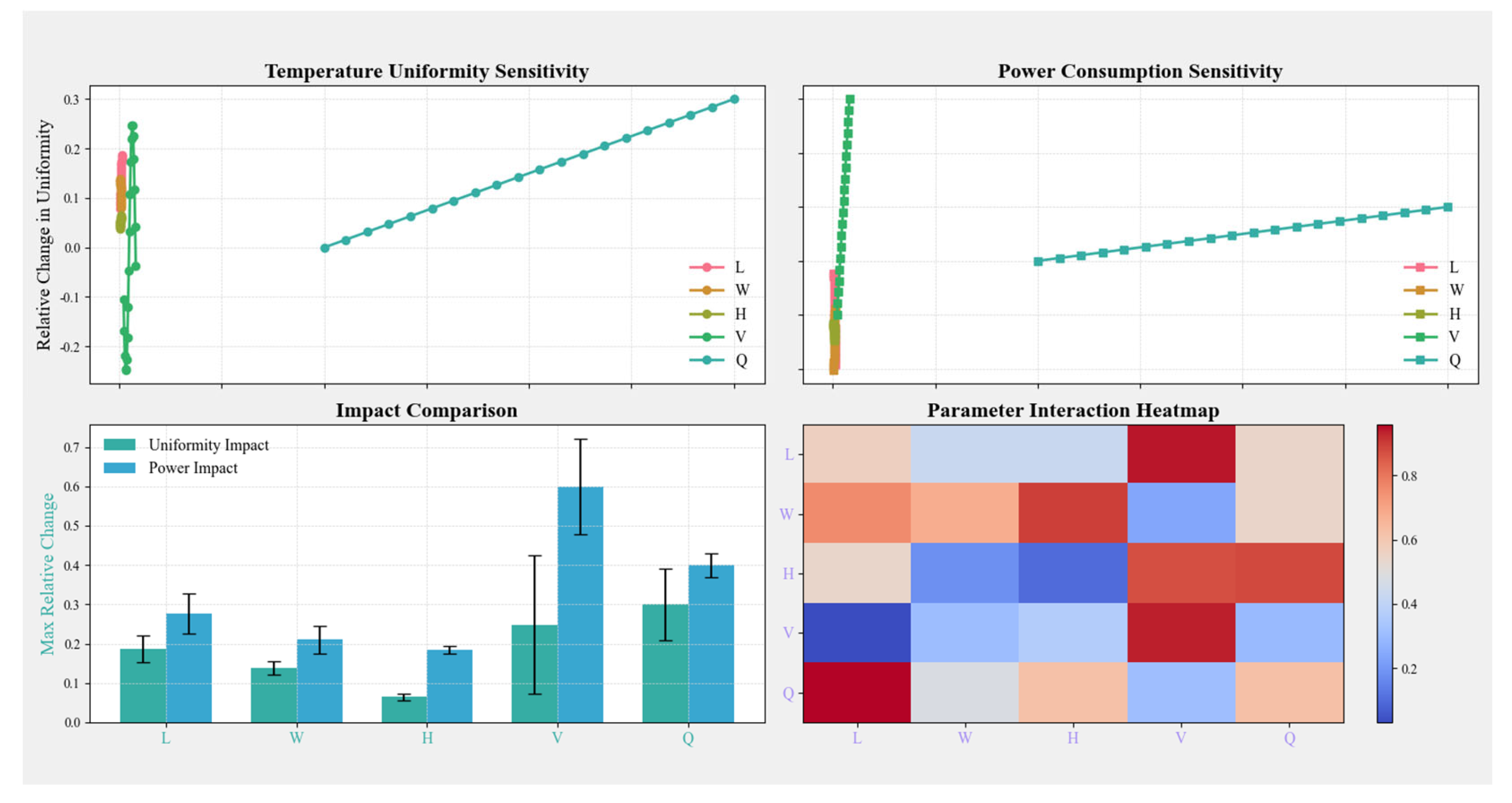
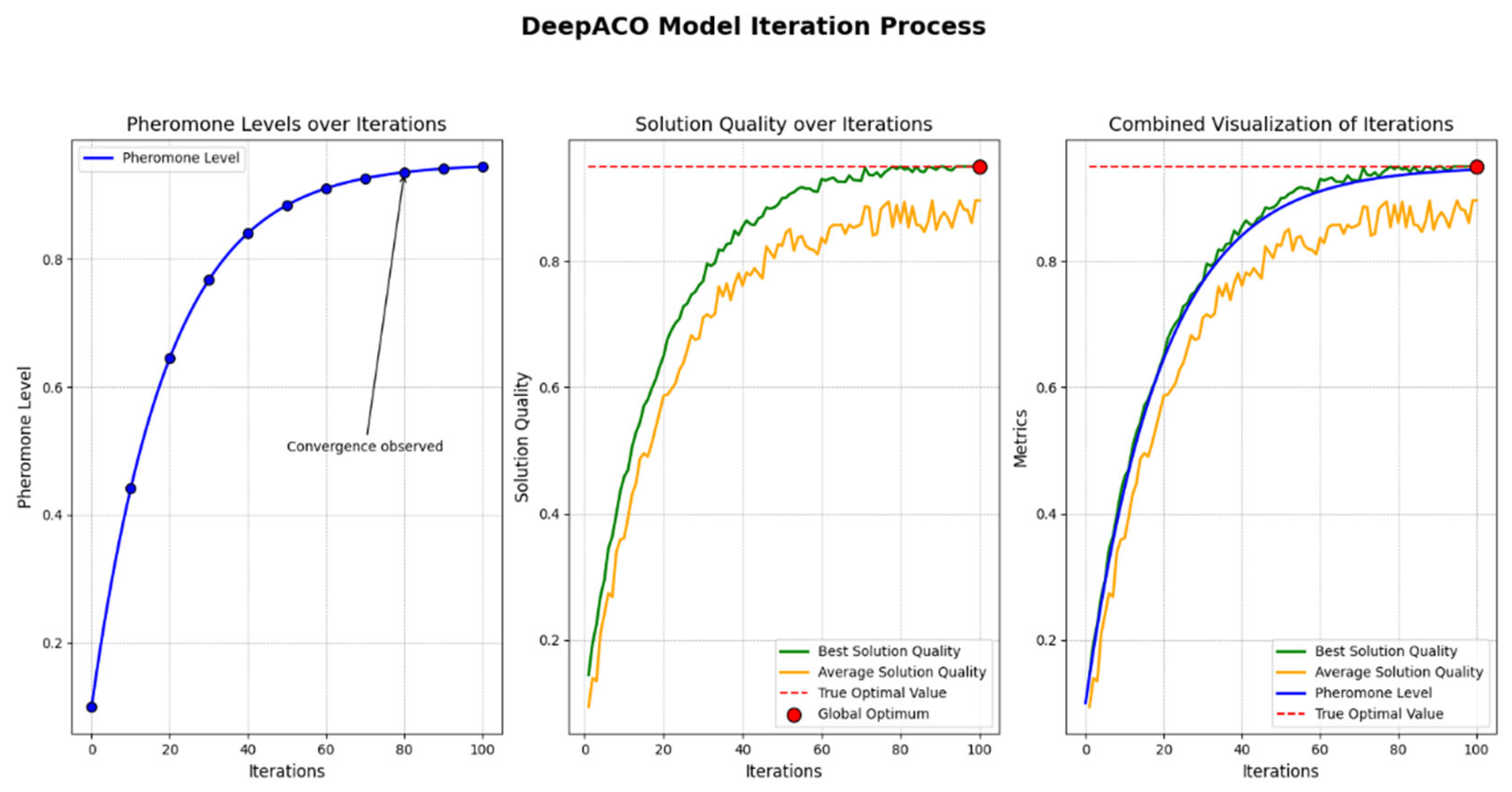
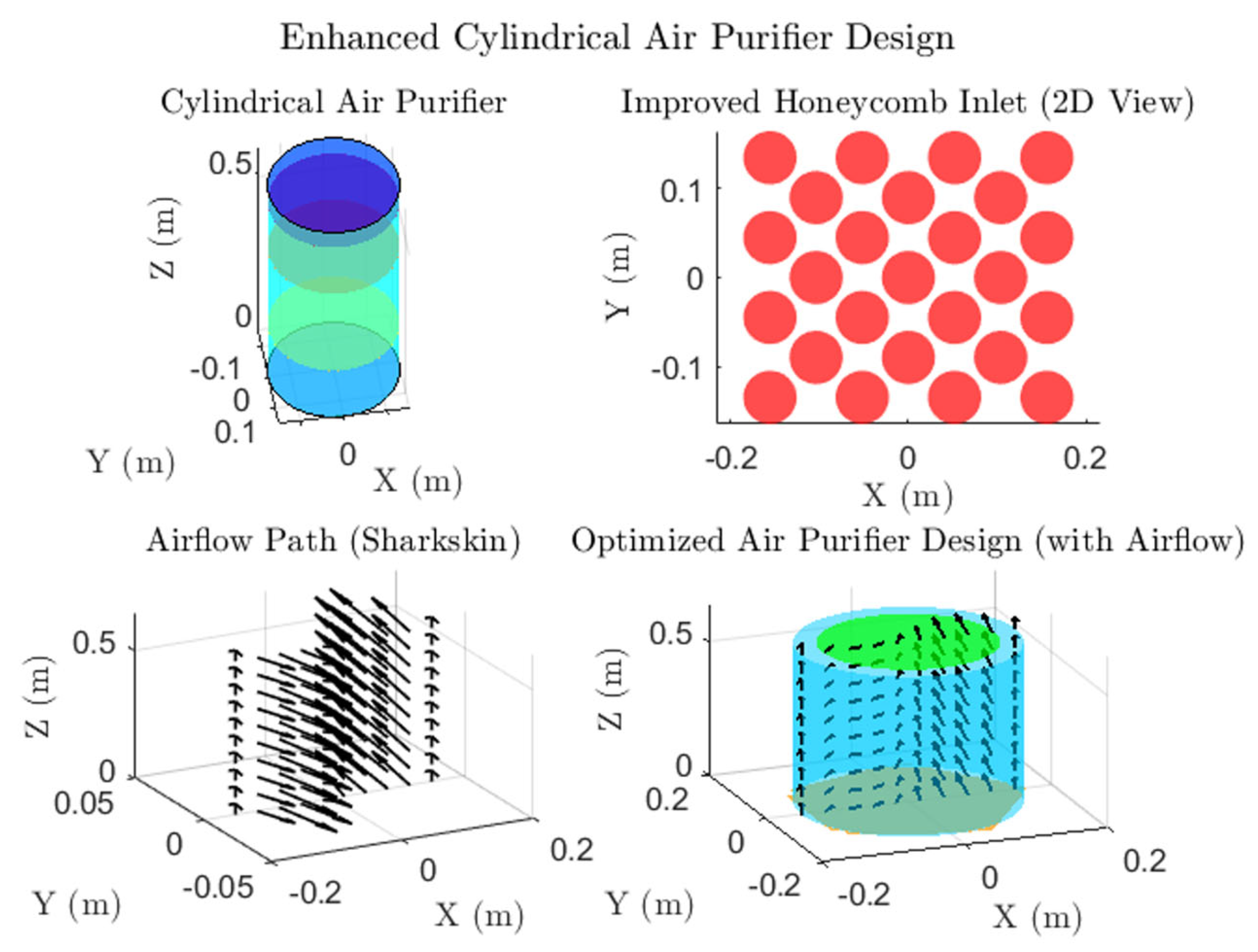
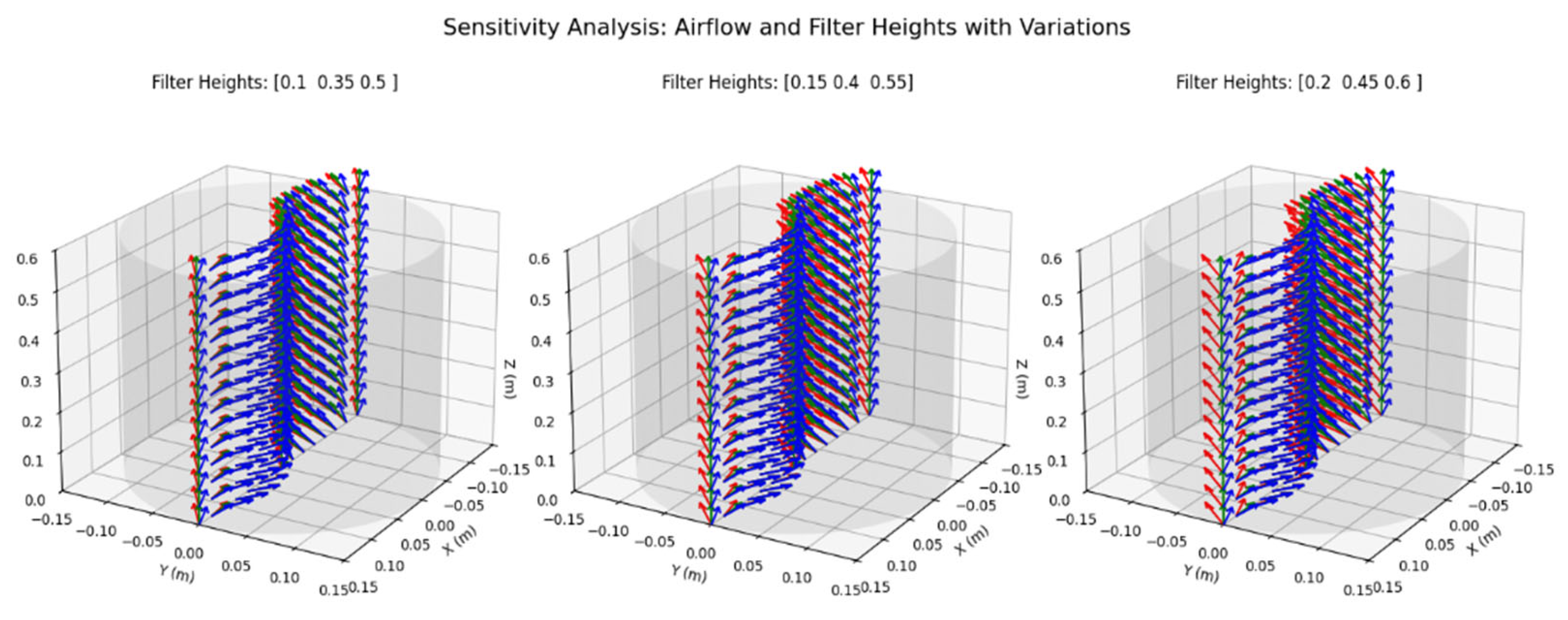
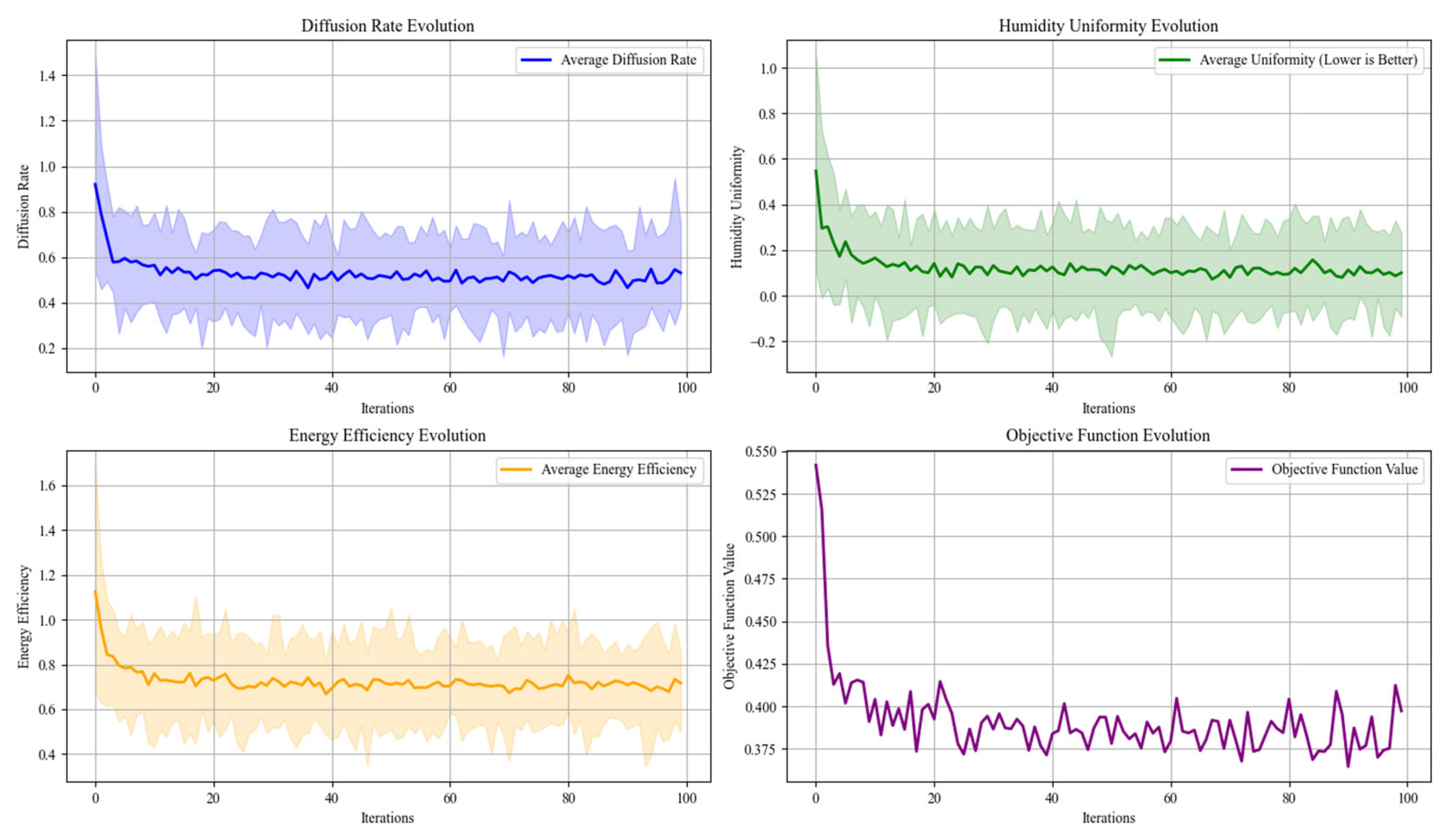
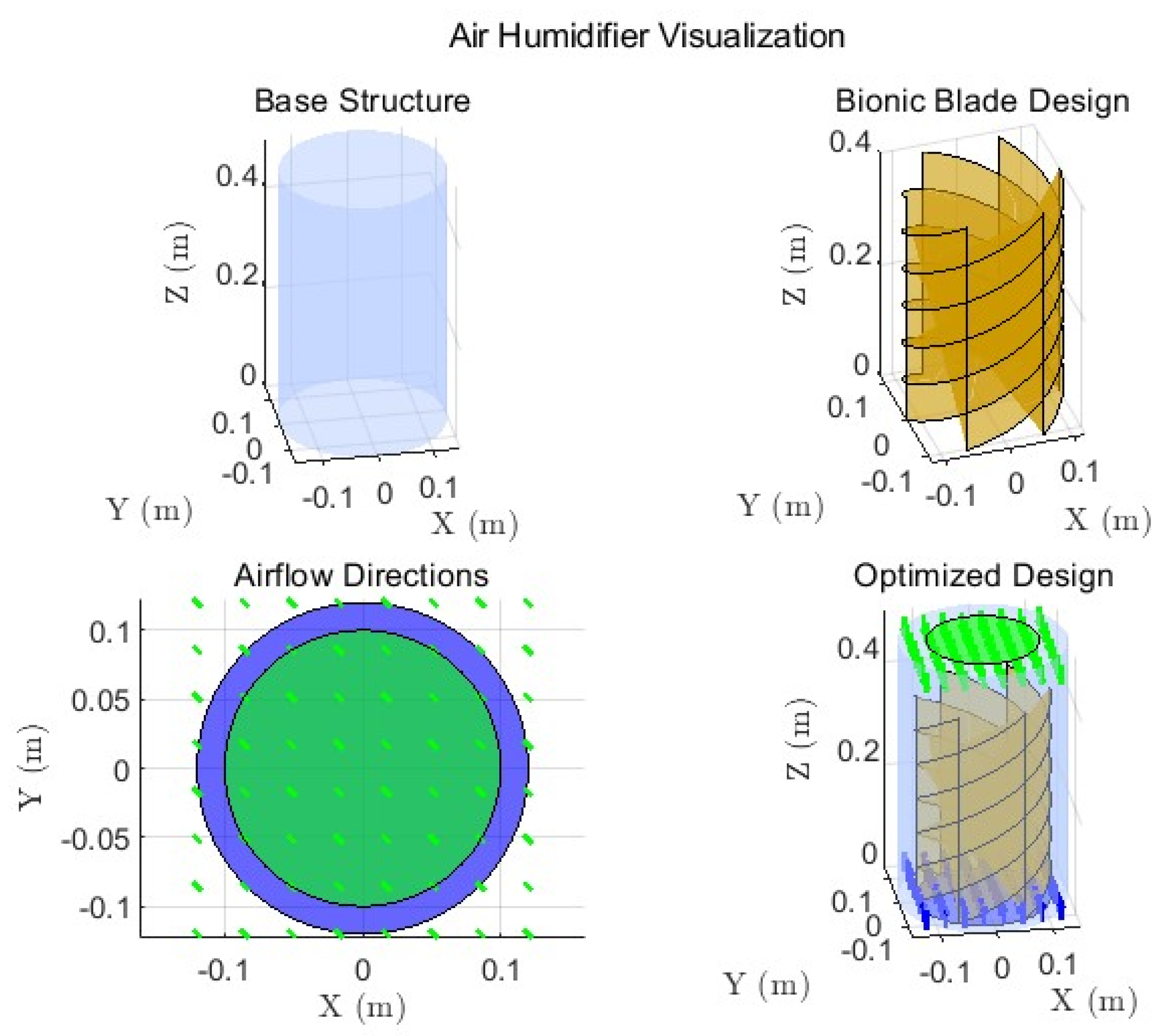
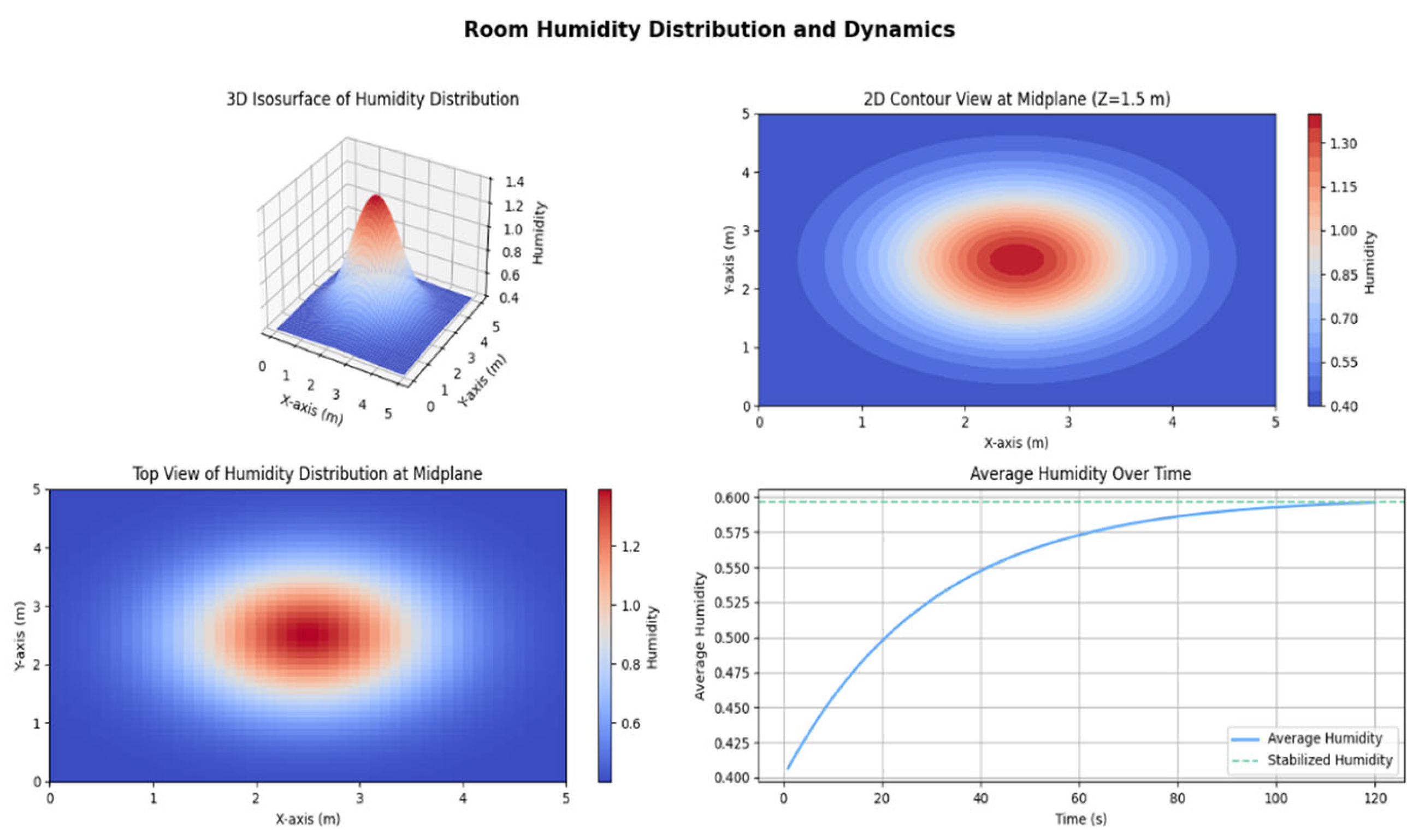
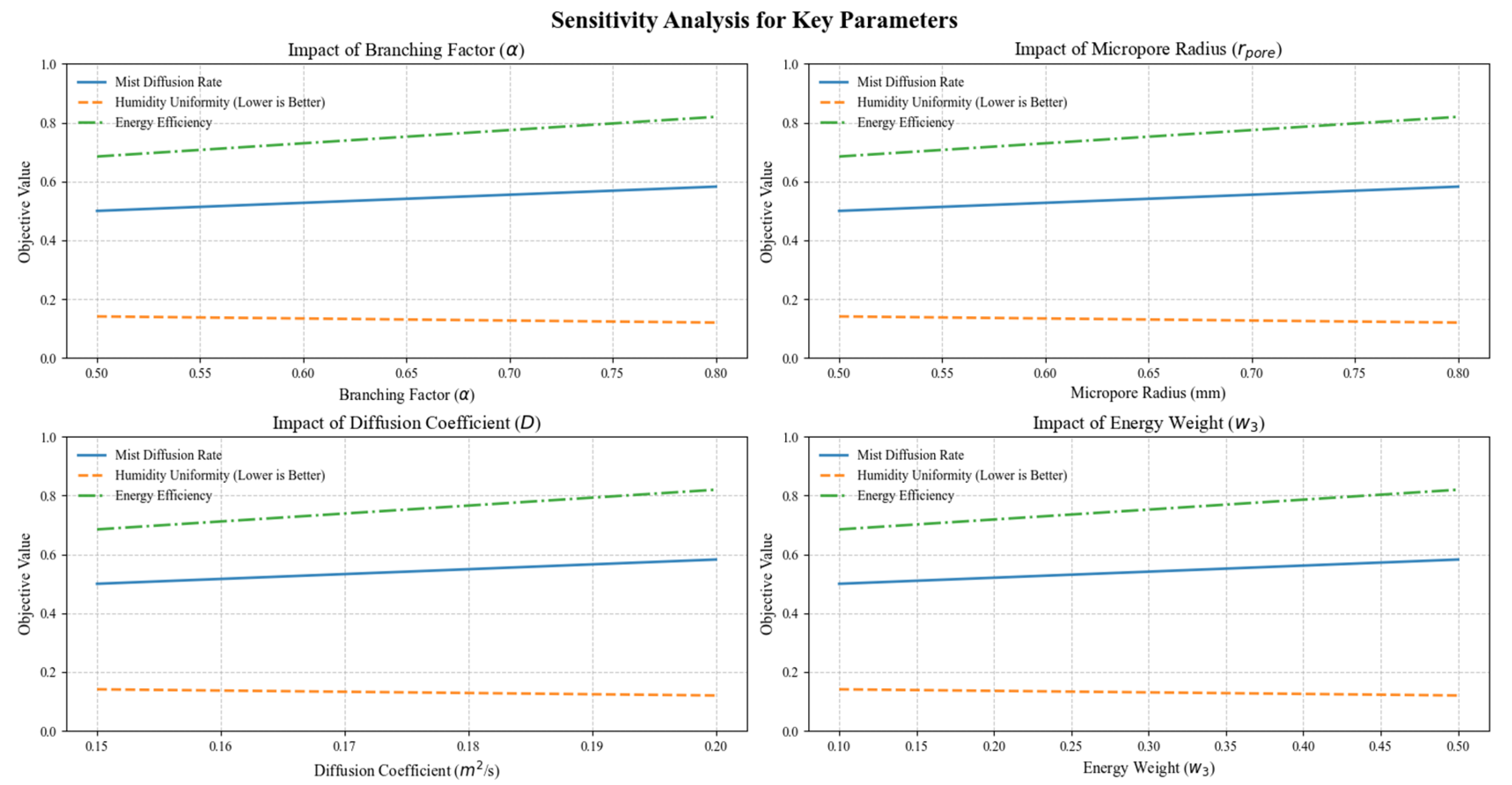
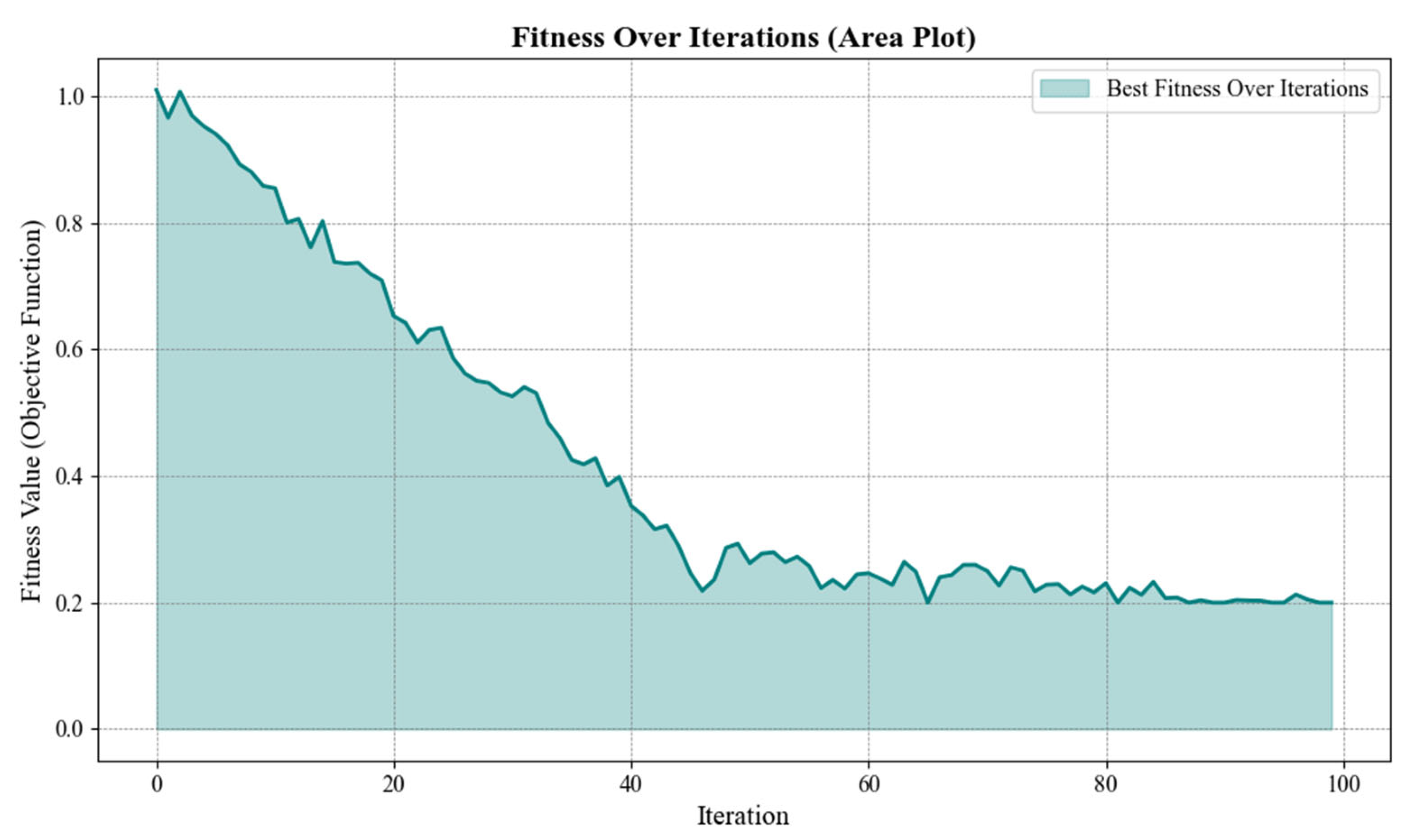
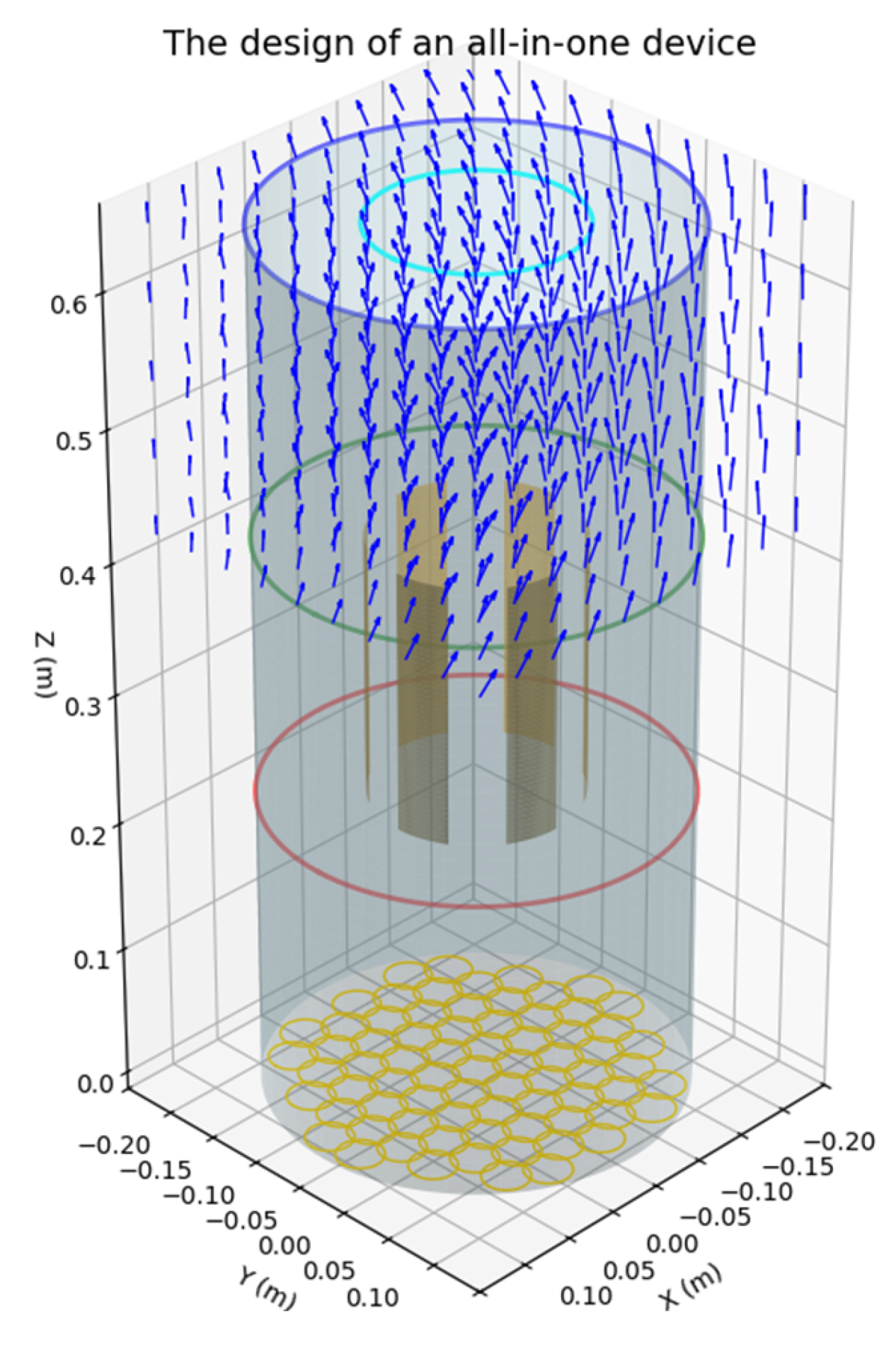


| Technique | Advantages | Disadvantages |
|---|---|---|
| Energy Simulation and Passive Cooling | Improves energy efficiency, reduces cooling demand | Climate-specific, requires design adjustments |
| Machine Learning and Computational Optimization | Dynamic optimization, real-time energy savings | High computational demand, complex models |
| Air Filtration and PCO | Improves IAQ, efficient pollutant removal | Scalability issues, byproduct formation |
| Humidity Control with Desiccant Wheels | Enhances comfort, energy-efficient humidity control | Performance varies with conditions |
| Multifunctional HVAC Systems | Space and energy savings, combines multiple functions | Integration and performance challenges |
| Optimization Algorithms | Solves multi-objective problems, improves efficiency | Computationally intensive, requires expertise |
| Bionic Design Principles | Enhances airflow, reduces energy use | Limited large-scale application |
| Parameter | Value | Unit |
|---|---|---|
| Population Size | 100 | individuals |
| Maximum Foraging Area Adjustment | 0.1 | proportional factor |
| PO Foraging Search Radius | 0.2 | proportional factor |
| Number of Iterations | 50 | iterations |
| Parameter Setting | Value |
|---|---|
| Learning Phase 1: Heuristic Indicator Training | |
| Learning Rate | 0.001 |
| Batch Size | 32 |
| Epochs | 500 |
| Dropout | 0.2 |
| L2 Regularization Coefficient | 0.0001 |
| Dataset Size | 10,000/samples |
| Learning Phase 2: Pheromone Trajectory Learning | |
| Number of Ants | 20 |
| Number of Iterations | 500 |
| Evaporation Rate | 0.1 |
| Heuristic Importance | 1 |
| Pheromone Importance | 2 |
| Initial Pheromone Value | 1 |
| Parameter Name | Value |
|---|---|
| Population Size | 30 |
| Maximum Number of Iterations | 500 |
| Sensitivity Initial Value | 1 |
| Vibration Parameter Initial Value | 0.5 |
| Random Disturbance Parameter | 0.5 |
| Positive Feedback Adjustment Weight Initial Value | 0.7 |
| Parameter Name | Value |
|---|---|
| Population Size | 30 |
| Maximum Number of Iterations | 500 |
| Balance Factor Initial Value | 2 |
| Step Size Factor | 0.01 |
| Initial Probability of Descent | 0.1 |
| Parameter | Symbol | Range |
|---|---|---|
| Length/m | L | 0.8 to 1.2 |
| Width/m | W | 0.4 to 0.8 |
| Height/m | H | 0.3 to 0.7 |
| Velocity/m | V | 2 to 8 |
| Airflow/m3/h | Q | 100 to 300 |
Disclaimer/Publisher’s Note: The statements, opinions and data contained in all publications are solely those of the individual author(s) and contributor(s) and not of MDPI and/or the editor(s). MDPI and/or the editor(s) disclaim responsibility for any injury to people or property resulting from any ideas, methods, instructions or products referred to in the content. |
© 2025 by the authors. Licensee MDPI, Basel, Switzerland. This article is an open access article distributed under the terms and conditions of the Creative Commons Attribution (CC BY) license (https://creativecommons.org/licenses/by/4.0/).
Share and Cite
Li, H.; Yang, B.; Gu, X.; Xu, W.; Liu, X. A Bionic-Based Multi-Objective Optimization for a Compact HVAC System with Integrated Air Conditioning, Purification, and Humidification. Biomimetics 2025, 10, 159. https://doi.org/10.3390/biomimetics10030159
Li H, Yang B, Gu X, Xu W, Liu X. A Bionic-Based Multi-Objective Optimization for a Compact HVAC System with Integrated Air Conditioning, Purification, and Humidification. Biomimetics. 2025; 10(3):159. https://doi.org/10.3390/biomimetics10030159
Chicago/Turabian StyleLi, He, Bozhi Yang, Xinyu Gu, Wen Xu, and Xuan Liu. 2025. "A Bionic-Based Multi-Objective Optimization for a Compact HVAC System with Integrated Air Conditioning, Purification, and Humidification" Biomimetics 10, no. 3: 159. https://doi.org/10.3390/biomimetics10030159
APA StyleLi, H., Yang, B., Gu, X., Xu, W., & Liu, X. (2025). A Bionic-Based Multi-Objective Optimization for a Compact HVAC System with Integrated Air Conditioning, Purification, and Humidification. Biomimetics, 10(3), 159. https://doi.org/10.3390/biomimetics10030159






